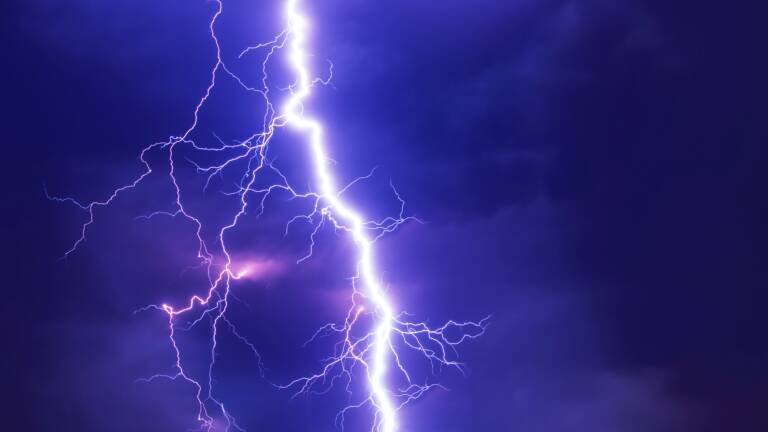Collecting electricity from the air: the new frontier of research

According to a team led by engineer Xiaomeng Liu of the University of Massachusetts Amherst, a material with nanopores smaller than 100 nanometers in diameter. it can harvest electricity generated by microscopic water droplets in moist air. It is a material with holes the size of a thousandth of a human hair.
They called their discovery the "generic Air-gen effect."
“The air contains a huge amount of electricity,” explains UMass Amherst engineer Jun Yao.
“Think of a cloud, which is nothing more than a mass of water droplets. Each of these droplets contains a charge, and when conditions are right, the cloud can produce lightning, but we don't know how to reliably capture the electricity from lightning. What we've done is create a small-scale, man-made cloud that produces electricity in a predictable and continuous way, so that we can harvest it.
The Air gen effect had already been produced, but it required a microfilament, a nanofilament, generated by a bacterium, Geobacter sulfurreducens. Now the research team has freed itself from dependence on this bacterium, making everything much simpler and more replicable on a large scale.
“What we understood after the discovery of Geobacter is that the ability to generate electricity from the air – what we later called the 'Air-gen effect' – turns out to be generic: literally any type of material can collect electricity from the air, as long as has a certain property,” explains Yao.
An electrical device with nanopores
This property is represented by nanopores, the size of which depends on the mean free path of water molecules in humid air. This is the distance a water molecule can travel in the air before colliding with another water molecule.
The generic Air-gen device consists of a thin film of material, such as cellulose, silk protein or graphene. Water molecules in the air can easily enter the nanopores and travel from the top of the film to the bottom, but collide with the sides of the pore during the journey.
These transfer charge to the material, resulting in a buildup, and as more water molecules end up at the top of the film, there is a charge imbalance between the two sides.
This produces an effect similar to that seen in lightning-producing clouds: rising air creates more collisions between water droplets at the top of a cloud, resulting in an excess of positive charge in the higher clouds and a excess negative charge in the lower ones.
In this case, the charge could be redirected to power small devices or stored in a battery of some sort.

At the moment, it is still an initial phase and a study of the phenomenon. The cellulose film the team tested had a spontaneous voltage of 260 millivolts in its surroundings, whereas a cell phone requires around 5 volts. But the thinness of the films means they could be stacked to scale Air-gen devices and make them of practical applicability.
Furthermore, the fact that they can be made from different materials means that the devices could be adapted to the environment in which they are to be used, the researchers say.
“The idea is simple, but it's never been discovered before, and it opens up all kinds of possibilities,” says Yao. “One could imagine binders made of one type of material for rainforest environments and another for drier regions.”
The next step will be to test the devices in different environments and work on their scalability. But the generic effect of the Air-gen is real and the possibilities it represents are hopeful.
Thus the way is paved for the generation of electricity from the air, exploiting its movements and intrinsic humidity. A completely new and practically unexplored frontier that could lead to autonomous electricity production for any part of the globe. An area that deserves to be explored.

Thanks to our Telegram channel you can stay updated on the publication of new articles from Economic Scenarios.
The article Collecting electricity from the air: the new frontier of research comes from Scenari Economici .
This is a machine translation of a post published on Scenari Economici at the URL https://scenarieconomici.it/raccogliere-elettricita-dallaria-la-nuova-frontiera-della-ricerca/ on Sat, 27 May 2023 11:00:21 +0000.
